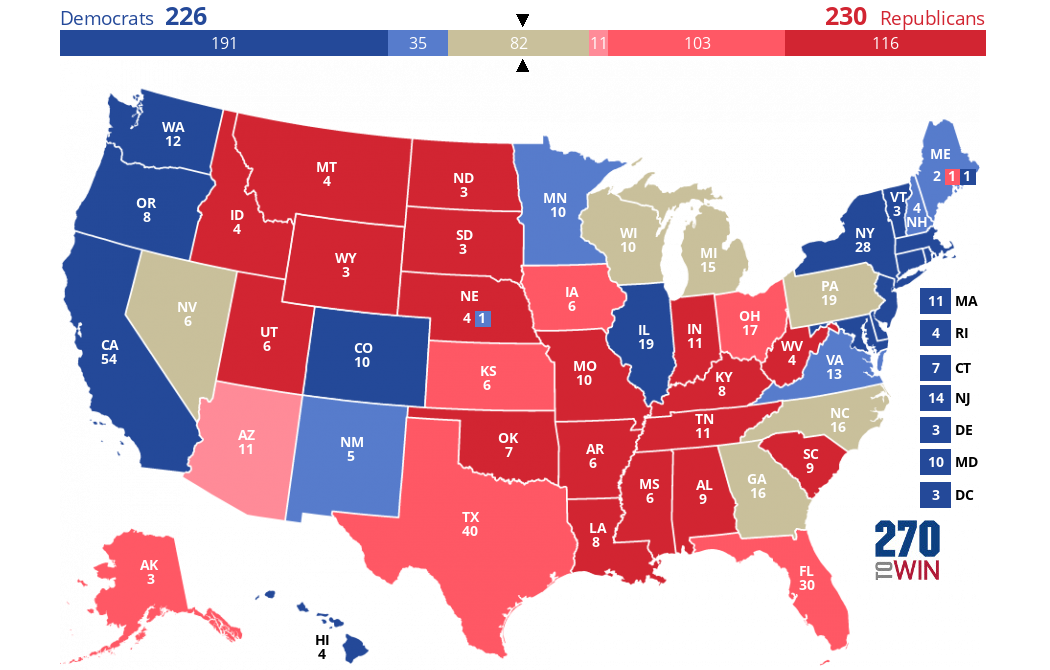Split Electoral Votes in Maine and Nebraska
In all but two states, electoral votes are winner-take-all.1 12016 saw seven electors cast their votes for someone other than their state's popular vote winner. This was a historically high number; 'faithless electors' have been quite rare in modern times. Most elections have none. In any case, this kind of 'split' is different than that enacted into law by Maine and Nebraska. The candidate winning the popular vote normally receives all of that state's votes. Maine and Nebraska have taken a different approach. Using the congressional district method, these states allocate two electoral votes to the state popular vote winner, and then one electoral vote to the popular vote winner in each congressional district (2 in Maine, 3 in Nebraska). This creates multiple popular vote contests in these states, which could lead to a split electoral vote.
Maine enacted this rule in advance of the 1972 presidential election, while Nebraska enacted it starting with the 1992 election. The first split happened in the 2008 election. That year, Barack Obama won Nebraska's 2nd District (Omaha and its suburbs), gaining a Democratic electoral vote in that state for the first time since 1964.
Maine had its first split in 2016, when Donald Trump won Maine's 2nd District, which covers most of the state away from Portland, Augusta and nearby coastal areas. Statewide, Maine last voted Republican in 1988.
In 2020, District 2 in each state was won by the candidate of the statewide popular vote loser. While the first time this has happened, the two votes also effectively cancelled each other out.
The 2024 electoral map lets you split each district individually. Keep in mind that absent a significant third party vote, it is mathematically impossible for the popular vote winner of the state to do so without winning at least one district.

